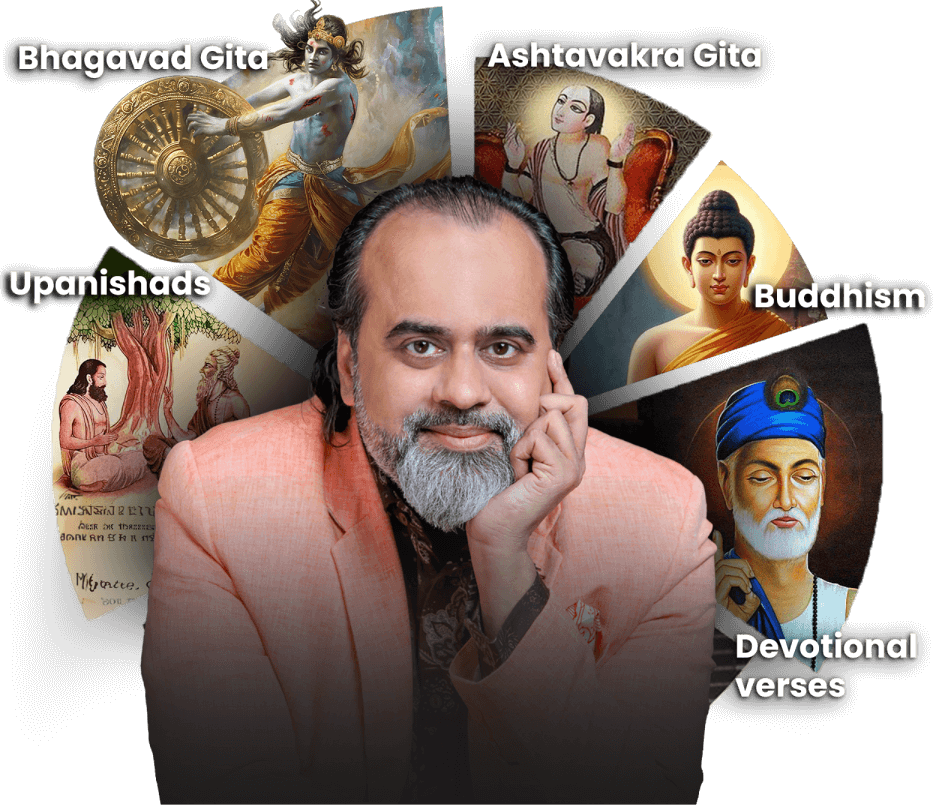The Destination and the Dance || IIT Delhi (2022)


Questioner: What is Shiva? What is Shakti?
Acharya Prashant: These are symbols. Shakti represents everything in motion, everything that can be experienced, everything that you can think of; Shakti represents the totality of that. If Shakti represents everything in motion, one feels like asking, “Why is everything in the motion in the first place? Why is everything moving?”
Let’s begin with ourselves. Why does the mind move so much? Why does the individual never rest anywhere? Why are we always thinking? Why do we always want to reach somewhere? What is this quest for attainment, achievement? What is the desire that fuels all our movements?
We move—it seems commonsensical—so that we may come to a point where there is no further need for movement. Is that not so? No one moves to remain moving; no one walks to remain walking; no one begins a journey with no end. So, if we are constantly in motion, both physically and mentally, that tells us something about who we are.
We are entities deeply in desire of something, and that is why we are constantly in motion. Otherwise, who wants to move? Otherwise, why would there be such unrest and disquiet within? You would never find any person, even a non-human organism, that is perfectly still, whether physically or mentally.
Consciousness moves. Consciousness moves, and it moves in search of a final destination, a place where there is no movement at all, a place where there is no experience at all. The clock keeps ticking so that you can come to a certain and ultimate timelessness. We value experiences so much, we want experiences of all kinds, so that we may come to a point where there is no further need for experience, where we are beyond experience. We keep looking at faces, we keep meeting people, we keep entering into relationships because we want to come to a point where there is no further need to look at any face or form, where there is no need to further remember any names. That point is symbolically represented by Shiva.
Shakti is movement. Shiva is the destination. Those who are inclined towards having the right kind of movement worship Shakti; those who are inclined towards the destination, those who have fallen in love with the destination itself, worship Shiva. The fact is that the two are inseparable.
Shakti is the totality of all our experiences. Everything that is in space-time is contained in Shakti. And space-time does not exist for itself; it exists for the sake of its dissolution. Had it existed for its own sake, you would have succeeded in somehow, at any point, finding contentment in it. But we don’t know of any person who has managed to find ultimate contentment in anything in the field of space-time.
Is there anything in the universe that can perfectly satisfy you? No. What does that tell you about your own consciousness? It is looking for something beyond, something transcendental. Now, that something transcendental is not an object of thought; it is not something you can think of, ideate, conceptualize, or imagine. That which is beyond imagination, formless, nirākāra , attributeless, *nirguṇa*—that is called Shiva.
To give a form to Shiva is not a very proper thing. It is some kind of human compulsion to always search for forms because we cannot think without forms, we cannot think without names. So, even to the formless we assign a form; even to the nameless we give a name. Irrespective of what we do, you must understand that Shiva is the name of the final nameless, formless, attributeless, shapeless, timeless Truth.
Why are we calling Shiva as Truth? Because, by definition, that which is changing, that which does not remain what it appears to be, has to be called as false. There is nothing in the world that remains what it appears to be. In fact, since things are changing every moment and it takes time for you to perceive anything, therefore by the time you perceive anything, it has already changed, has it not?
That is the reason why the world is called as false. It is not what it appears to be. Even stuff that we call as factual is actually not factual. Because of the gap between the observed phenomena and the observer’s perception, there is a lag, and that lag is sufficient for the observed entity to change. Therefore, what is the Truth? Only something that cannot be experienced. If it can be experienced, it is false.
You can understand it further to mean that the experiencer itself is false. Why? Because the experiencer places so much trust in his experience. He says, “It is the Truth because I am experiencing it; it exists because I am seeing it; it was said because I heard it.” Ha! Because you heard it, it becomes the Truth—seriously?
There are so many of you here, and I am one person saying one thing, but I am so sure that no less than two hundred versions of what I am saying are being heard here right now. The experiencer is false, but the experiencer is just too self-confident. The experiencer says, “Because I am testifying through my ears that such and such thing has been said, therefore it has been said. I am the proof.” No, you are not the proof. Ask your neighbor: he has not heard the same things as you have—even in the last fifteen minutes.
That is the reason why Satyam Shivam Sundaram (Only the Truth, Shiva, is beautiful). Shiva is called the Truth because anything that is within the purview of experience cannot be fully trusted.
